İstanbul City University
Course Name: Management Information Systems
Course Code: MGT 332
Language of Course: English
Credit: 3
Course Coordinator / Instructor: Şadi Evren ŞEKER
Contact:mis2018@sadievrenseker.com
Schedule:Wed 15.00 – 17.00 and Fri 16.00 – 17.00 -> Updated to Wed 15.00 – 18.00
Location : ACAD Building 1302
Course Description:
MIS is one of the key concepts for the today’s organizations. We mainly focus on the core technologies in modern enterprises and their management strategies and key concepts. This course is not a technology or computer or software course. Instead we focus on the leverage of the information systems, to operate efficiently. Whether the organization is a new entrepreneurial start-up, an established business, a non-profit, or a government enterprise, its ability to deliver on its mission and implement its strategy could be significantly impeded without knowledgeable individuals to guide the design, acquisition, effective use, and support of the information systems that provide the foundation for the organization.
Because the role of MIS is critical for many organizations, it has become an exciting career choice that allows you the flexibility to apply the skills you develop through your study of management information systems to a broad range of disciplines. An organization is made up of four key components—technology, data, processes, and people. A career in MIS can offer you many options: you could take a strategic approach and become a systems or enterprise architect who is an expert in integrating across these components; or you could become a specialist in data analytics, process redesign, or technology management. What distinguishes MIS from other types of information technology is the recognition of the role and importance of people in both enabling and constraining organizations.
The guiding principle behind this course is that for an enterprise to run efficiently, its information systems need to work efficiently. Modern organizations are simply too complex, with too many people and too much data, for work to be done manually or inefficiently.
Course also concentrates on the digital firm and data management concepts. One of the major key concepts in the course is monetizing the technology and data in the new technology age.
Course Objective:
- understand and articulate fundamental concepts of information technology management.
- assess and apply IT to solve common business problems.
- suggest and defend effective solutions to business problems, and design a database application to solve a business problem.
- discuss the ethical aspects of information technology use in the organization and its governance issues.
Reference Text Book and other Resources:
Management Information Systems: Managing the Digital Firm, Kenneth C. Laudon and Jane P. Laudon, 15th edition, 2017, Pearson
Grading
- Case Studies, Homework, Reading, Attendence and Discussions: 30%
- Project: 30%
- Final Exam: 40%
Course Content:
- I. Organizations, Management, and the Networked Enterprise
- 1. Information Systems in Global Business Today
- 2. Global E-business and Collaboration
- 3. Information Systems, Organizations, and Strategy
- 4. Ethical and Social Issues in Information Systems
- II. Information Technology Infrastructure
- 5. IT Infrastructure and Emerging Technologies
- 6. Foundations of Business Intelligence: Databases and Information Management
- 7. Telecommunications, the Internet, and Wireless Technology
- 8. Securing Information Systems
- III. Key System Applications for the Digital Age
- 9. Achieving Operational Excellence and Customer Intimacy: Enterprise Applications
- 10. E-commerce: Digital Markets, Digital Goods
- 11. Managing Knowledge
- 12. Enhancing Decision Making
- 13. Building Information Systems
- 14. Managing Projects
- 15. Managing Global Systems
Weekly Plan
Week 1 (Feb 28) : Introduction to Course Content and Syllabus
Week 2 (Mar 7): Introduction to Global Systems and Key Concepts (Slides) :
- Data, Information, Knowledge and Wisdom Pyramid,
- Business Information Value Chain
- Management Levels ( Senior, Midlevel and Operational)
- Plans (Strategic, Tactic and Optimum Planning)
- Blackbox Approach to system and I/O of Information System and Feedback
- Information System and Relations between Organization, Technology and Management
- Retail Value Chain
Week 3 ( Mar 14): Global e-business and Collaboration (Slides , Slides (PPT) ):
- Introduction to Knowledge Economy
- Knowledge Workers
- Knowledge Management
- Development Stages, Industrializaion and Knowledge economy
- Tacit vs Explicit Knowledge
- Types of Capital: Intellectual Capital, Social Capital
- Transaction Processing Systems
- Relation among Knowledge, Process and People
- Enterprise Application Architecture
- Knowledge Management Framework
Week 4 ( Mar 21): Information Systems, Organizations and Strategy ( Slides ):
- Comparative Definition of Organization
- Key Relations between Organization and IS
- Systems Approach and Black Box
- Business Processes and Routines
- Organizational Culture
- IS effect 1: Flattening organizations
- IS effects 2: Resistance to change (Technology acceptance model)
- IS effects 3: Digitalization
- Strategical, tactical and optimum planning
- Porter’s competitive forces model
- Value chain model
- The value web
- BCG Matrix
- IS effect 4: strategy and DSS
Week 5 ( Mar 28): Introduction to IT and key concepts (Slides)
- Some Key Concepts:
- Relation between Business Strategy, IT Strategy and Information Technology,
- Brief history of computers and evolution of computer architectures
- Client Server architecture and n-tiered architectures
- Moore’s Law
- Metcalfe’s Law
- Databases
- Operating Systems
- Open Source and Free Softwares
- Cloud Computing
- Green Computing
- TPS and Transaction Cost Theory
- Agency Cost Theory
- SOA (Service Oriented Architecture)
- Privacy and IT Relation: Privacy of employees and Corporate Privacy and Secrecy
- Case Study 1: (Due Date: May 2) Prepare an essay about IT and computers and address the questions below:
- What has been the impact of faster and cheaper computers for personal and company use? What technological advances and benefits are driving the expansion in the use of personal computers? What are the limitations of faster and cheaper computers? If you cannot think of a strategy for answering this question, you may want to consider weaving all or some of the Case Learning Outcomes into your response by addressing the following: 1. What are the main components of personal computers used in an office environment? 2. How has the cost of computers used in an office changed over the past 30 – 40 years? Which main component of the computer is driving this change? 3. What has been the result of this cost change in the last 20 years? 4. What limits the price from changing drastically in the future? 5. What is e-waste and why is it a problem?
Week 6 (Apr 4): Business Intelligence, Database and Information Management ( Slides )
- Projects : What to do?, How to do? Groups, project topics and discussions.
- Homework 1: Prepare a business plan for your organization (Due Date: Apr 18) (click for a template questionnaire )
- Some Key Concepts:
- What is BI
- Introduction to Databases: RDBMS
- Data Warehouses and Data Marts
- ETL
- Database Normalization
- Dashboards
- Big Data
- Case Study 2: (Due Date: May 9): Read the following case study (click here) and discuss below questions
- What is the business strategy of HiCar?
- What are the tactics of HiCar?
- How would you differentiate strategic and tactical objectives?
- Would you add or update any part of their ICT model if they operate outside of EU, such as Turkey?
- Suggest an update for HiCar with self driving cars (cars do not need any driver). Think about, charging stations, parking, delivery or entertainment in these new cars and suggests an update to the HiCar information model and business rules, explain the updates and their complications in detail.
Week 7 (Apr 11): Telecommunication, Internet and Wireless Technologies ( Slides )
- Some Key Concepts:
- PAN, LAN, MAN, WAN
- Cabling alternatives and Physical Layer: F/O, WiFi, UTP, Dial up, ADSL
- Protocols: Packet Switching, TCP/IP, Routers
- Client/Server communication
- VPN, Internet, Extranet, Intranet
- Homework 2: Prepare a database and BI Dashboardsfor your organization (Due Date : Apr 25)
Week 8 (Apr 18): Security of Information Systems( Slides)
- Video Cases:
- Some Key Concepts
- System Vulnerabilities
- Data Breach,
- Hacking vs Cracking
- Firewalls
- Spywares
- Viruses
- Spoofing
- Sniffing
- Denial of Service Attack
- Distributed Denial of Service Attack
- Computer Crime vs Real Life Crimes
- Identity Theft
- Phishing
- Evil Twins
- Pharming
- Click Fraud
- Human Factor, Internal Threat: Employees
- Electronic Evidence
- ISO 27001, 27002, COBIT, ITIL
- Security Profiling and Auditing
- MIS Auditing
- Public Key Cryptography vs Private Key Cryptography
- Homework 3: Prepare a telecommunication strategy for your business ( Due Date : May 2)
- Case Study 3 (Due Date: May 16): Read the following case study ( click here ) and discuss below questions:
- What are the strengths and weaknesses of UK Electrol system in the case study?
- In your opinion, what are the most critical components of the system and if you would change one of these components, which one would you change and how?
- Draw a database diagram for holding possible data tables of the system
- Draw a deployment diagram for the possible information system
- Point out the possible security problems and suggest solutions for them.
- What would you like to monitor on the system if you would design a BI dashboard?
- Submissions this week : Project Proposal Report, Homework 1
Week 9 (Apr 25): Operational Excellence and Customer Intimacy (Slides)
- Homework 4: Prepare a network strategy for your organization (Due Date: May 9)
- Submissions to this week : Business Plan for your project, Homework 2
Week 10 (May 2): Digital Markets Digital Goods and Digitalization (Slides)
- Homework 5: Prepare a security plan for your organization. (Due Date: May 16)
- Submissions to this week : Case Study 1, Homework 3
Week 11 ( May 9): Managing Knowledge (Slides)
- Homework 6: Digitalization strategy report (Due Date: May 23)
- Submissions to this week : Case Study 2, Homework 4, Technology report of your project
Week 12 ( May 16): Decision Making and DSS (Slides)
- Submissions to this week : Case Study 3, Homework 5, E-Commerce Strategy Report for your project
Week 13 ( May 23): Building an Information System (Slides)
- Submissions to this week : Knowledge management report for your project, Homework 6
Week 14 ( May 30): Project Presentations, submit all your files (Please report, presentations or all supplemental documents until May 29 midnight)
Project Details
You are free to form a project group of maximum 4 people. You are also free to come with a project idea (which is suitable for digital firm).
Project reports are listed as below:
- Proposal report (briefly explain your project and digital firm idea) (due date: Apr 18)
- Business plan (click for a template questionnaire ) (due date: Apr 25)
- Technology report of your organization (due date: May 9)
- E-Commerce strategy report (due date: May 16)
- Knowledge management report (due date: May 23)
Project deliveries:
- A project report, which covers all the reports above besides the report of your team performance and experiences.
- A project presentation (presentation will take place at May 23 and May 30, so all the deadlines are strict)
Project Grading:
- Submission on time (until May 29 midnight, LMT): 10%
- Project presentation 30%
- Project Report 60%
Grades
| STUNo | HW 1 | HW2 | HW3 | HW4 | HW5 | HW6 | CS1 | CS2 | CS3 | project | final | overall |
| 213112795 | 1 | 1 | 1 | 1 | 1 | 1 | 1 | 1 | 1 | 100 | 50 | 80 |
| 214051717 | 1 | 1 | 1 | 1 | 1 | 1 | 1 | 1 | 1 | 70 | 40 | 67 |
| 213903610 | 0 | 0 | 1 | 1 | 1 | 1 | 1 | 1 | 1 | 50 | 30 | 50.33333333 |
| 215372000 | 1 | 0 | 0 | 0 | 0 | 0 | 0 | 0 | 0 | 100 | 55 | 55.33333333 |
| 214001856 | 1 | 1 | 1 | 1 | 1 | 0 | 1 | 1 | 1 | 100 | 70 | 84.66666667 |
| 214051453 | 1 | 0 | 0 | 0 | 0 | 1 | 1 | 1 | 0 | 90 | 30 | 52.33333333 |
| 214291745 | 0 | 1 | 0 | 1 | 1 | 0 | 1 | 1 | 1 | 0 | 50 | 40 |
| 213862415 | 1 | 1 | 1 | 1 | 1 | 1 | 1 | 1 | 1 | 30 | 45 | 57 |
| 214100938 | 1 | 0 | 1 | 1 | 1 | 0 | 1 | 1 | 1 | 70 | 35 | 58.33333333 |
| 214602080 | 0 | 0 | 0 | 0 | 0 | 0 | 0 | 0 | 0 | 0 | 0 | 0 |
| 213010379 | 0 | 1 | 0 | 1 | 1 | 1 | 1 | 0 | 0 | 50 | 60 | 55.66666667 |
| 214111202 | 0 | 0 | 1 | 1 | 1 | 1 | 1 | 1 | 1 | 70 | 25 | 54.33333333 |
| 214040369 | 1 | 1 | 1 | 1 | 1 | 1 | 1 | 1 | 1 | 90 | 40 | 73 |
| 213131551 | 1 | 0 | 0 | 0 | 0 | 0 | 0 | 0 | 0 | 65 | 35 | 36.83333333 |
| 214110163 | 1 | 1 | 1 | 1 | 1 | 1 | 1 | 1 | 1 | 90 | 40 | 73 |
| 717741596 | 1 | 0 | 0 | 0 | 0 | 1 | 1 | 0 | 1 | 80 | 65 | 63.33333333 |
| 212971656 | 0 | 0 | 1 | 1 | 1 | 1 | 1 | 1 | 1 | 60 | 80 | 73.33333333 |
| 213012209 | 1 | 1 | 1 | 1 | 1 | 1 | 1 | 1 | 1 | 70 | 50 | 71 |
| 213912140 | 1 | 1 | 1 | 1 | 1 | 1 | 1 | 1 | 1 | 85 | 55 | 77.5 |
| 214051231 | 1 | 1 | 0 | 0 | 1 | 1 | 1 | 1 | 1 | 90 | 45 | 68.33333333 |
| 213901483 | 1 | 1 | 1 | 1 | 1 | 1 | 1 | 1 | 1 | 80 | 55 | 76 |
| 213911106 | 1 | 1 | 1 | 1 | 1 | 1 | 1 | 1 | 1 | 70 | 80 | 83 |
| 717740647 | 1 | 1 | 1 | 1 | 1 | 0 | 1 | 1 | 1 | 80 | 45 | 68.66666667 |
| 213862698 | 1 | 1 | 1 | 1 | 1 | 0 | 1 | 1 | 1 | 90 | 55 | 75.66666667 |
| 213962664 | 1 | 1 | 1 | 1 | 1 | 1 | 1 | 1 | 1 | 70 | 80 | 83 |
| 213351225 | 1 | 1 | 1 | 1 | 1 | 1 | 1 | 1 | 1 | 100 | 50 | 80 |
| 213861889 | 0 | 0 | 0 | 0 | 0 | 0 | 0 | 1 | 0 | 100 | 50 | 53.33333333 |
| 216750736 | 0 | 0 | 0 | 0 | 0 | 0 | 0 | 0 | 0 | 0 | 0 | 0 |
| 717742673 | 0 | 1 | 1 | 1 | 1 | 1 | 1 | 1 | 1 | 80 | 65 | 76.66666667 |
| 514572550 | 1 | 0 | 0 | 0 | 0 | 0 | 0 | 0 | 0 | 75 | 40 | 41.83333333 |
| 214042266 | 1 | 1 | 0 | 1 | 1 | 1 | 0 | 1 | 1 | 70 | 45 | 62.33333333 |
| 213951503 | 1 | 1 | 1 | 1 | 1 | 1 | 1 | 1 | 1 | 80 | 50 | 74 |
| 213912464 | 1 | 1 | 1 | 1 | 1 | 1 | 1 | 1 | 1 | 70 | 25 | 61 |
| 717740681 | 1 | 1 | 1 | 1 | 1 | 1 | 1 | 1 | 1 | 80 | 75 | 84 |
| 216420697 | 0 | 0 | 0 | 0 | 0 | 0 | 0 | 0 | 0 | 75 | 40 | 38.5 |
| 216792460 | 1 | 1 | 1 | 1 | 1 | 1 | 1 | 1 | 1 | 30 | 55 | 61 |
| 213900820 | 1 | 1 | 1 | 1 | 1 | 1 | 1 | 1 | 1 | 30 | 65 | 65 |
| 717742559 | 1 | 1 | 1 | 1 | 1 | 1 | 1 | 1 | 1 | 90 | 55 | 79 |
| 213910298 | 1 | 0 | 0 | 0 | 0 | 0 | 0 | 0 | 0 | 80 | 55 | 49.33333333 |
| 216750737 | 0 | 0 | 0 | 0 | 0 | 0 | 0 | 0 | 0 | 0 | 0 | 0 |
| 214011064 | 1 | 1 | 1 | 1 | 1 | 1 | 1 | 1 | 1 | 90 | 35 | 71 |
| 215312783 | 1 | 0 | 1 | 0 | 0 | 1 | 1 | 0 | 0 | 100 | 45 | 61.33333333 |
| 213081051 | 0 | 0 | 0 | 0 | 0 | 0 | 0 | 0 | 0 | 80 | 50 | 44 |
| 213071521 | 0 | 0 | 0 | 0 | 0 | 0 | 0 | 0 | 0 | 0 | 0 | 0 |
| 214101987 | 1 | 1 | 1 | 1 | 1 | 1 | 1 | 1 | 1 | 100 | 60 | 84 |
| 214212011 | 1 | 1 | 1 | 1 | 1 | 1 | 1 | 1 | 1 | 0 | 60 | 54 |
| 213130541 | 1 | 0 | 1 | 1 | 1 | 0 | 1 | 1 | 1 | 0 | 70 | 51.33333333 |
| 216291722 | 0 | 1 | 0 | 1 | 0 | 1 | 0 | 1 | 1 | 100 | 65 | 72.66666667 |
| 211630985 | 0 | 0 | 0 | 0 | 0 | 0 | 0 | 0 | 0 | 0 | 0 | 0 |
| 210110159 | 0 | 0 | 0 | 0 | 0 | 0 | 0 | 0 | 0 | 0 | 0 | 0 |
| 212102935 | 0 | 0 | 0 | 0 | 0 | 0 | 0 | 0 | 0 | 30 | 40 | 25 |
| 213911523 | 1 | 1 | 1 | 1 | 1 | 1 | 1 | 1 | 1 | 90 | 40 | 73 |
| 213012225 | 1 | 0 | 0 | 0 | 0 | 0 | 0 | 0 | 0 | 90 | 45 | 48.33333333 |
| 214971189 | 1 | 1 | 0 | 1 | 1 | 1 | 0 | 1 | 1 | 30 | 40 | 48.33333333 |
| 212061312 | 0 | 1 | 1 | 0 | 0 | 0 | 1 | 0 | 0 | 90 | 55 | 59 |
| 212460545 | 1 | 1 | 1 | 1 | 1 | 1 | 1 | 1 | 1 | 80 | 40 | 70 |
| 213963404 | 0 | 0 | 0 | 1 | 1 | 0 | 1 | 1 | 0 | 85 | 60 | 62.83333333 |
| 213011250 | 1 | 1 | 1 | 1 | 1 | 1 | 0 | 1 | 1 | 90 | 40 | 69.66666667 |
| 212030215 | 1 | 1 | 1 | 1 | 1 | 1 | 1 | 1 | 1 | 75 | 35 | 66.5 |
| 213131500 | 0 | 0 | 0 | 0 | 0 | 0 | 0 | 0 | 0 | 30 | 45 | 27 |
| 215191281 | 1 | 0 | 0 | 0 | 1 | 0 | 0 | 0 | 0 | 90 | 35 | 47.66666667 |
| 213060080 | 1 | 1 | 0 | 1 | 1 | 1 | 1 | 1 | 1 | 85 | 50 | 72.16666667 |
| 613502082 | 1 | 1 | 0 | 1 | 1 | 1 | 0 | 1 | 1 | 90 | 32 | 63.13333333 |
| 213490216 | 1 | 0 | 0 | 0 | 0 | 0 | 0 | 0 | 0 | 0 | 35 | 17.33333333 |
| 717740650 | 1 | 1 | 1 | 1 | 1 | 1 | 1 | 1 | 1 | 90 | 70 | 85 |
| 213962946 | 0 | 0 | 0 | 0 | 0 | 0 | 0 | 0 | 0 | 0 | 15 | 6 |
| 212971312 | 1 | 0 | 1 | 1 | 1 | 1 | 1 | 1 | 1 | 100 | 50 | 76.66666667 |
| 213010430 | 1 | 0 | 0 | 1 | 0 | 1 | 1 | 1 | 0 | 100 | 45 | 64.66666667 |
If you have any objections, questions or problems with your grades, please contact me until 15th of June, after the date I will submit your grades.
Also, for the people with problems on project presentation videos, please contact me for updates.
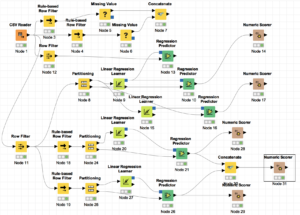
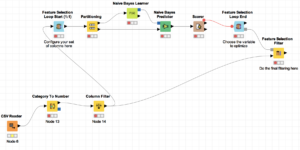
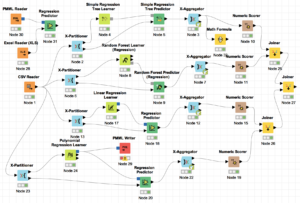
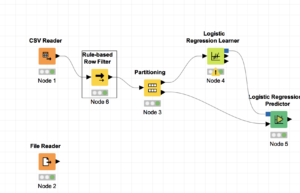
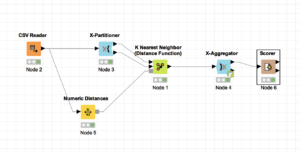
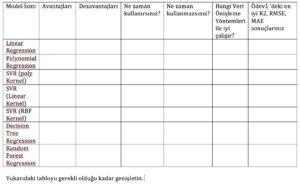
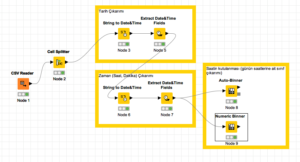
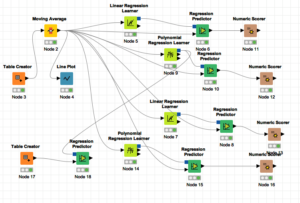
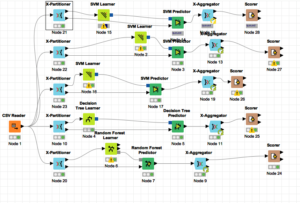
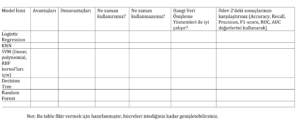
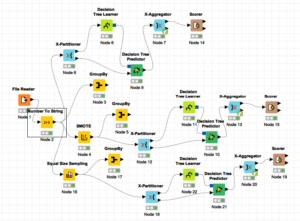
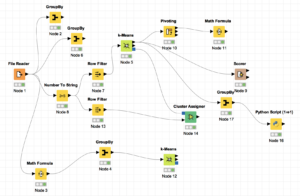
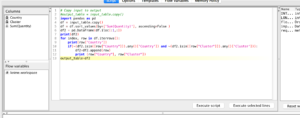
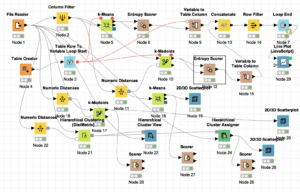
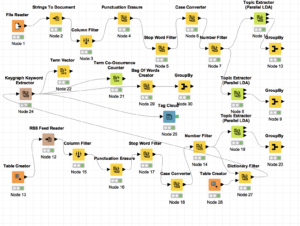
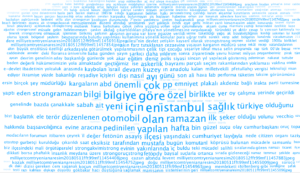
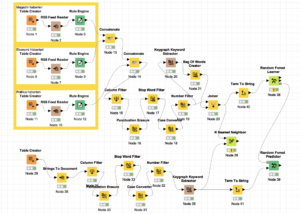
Recent Comments